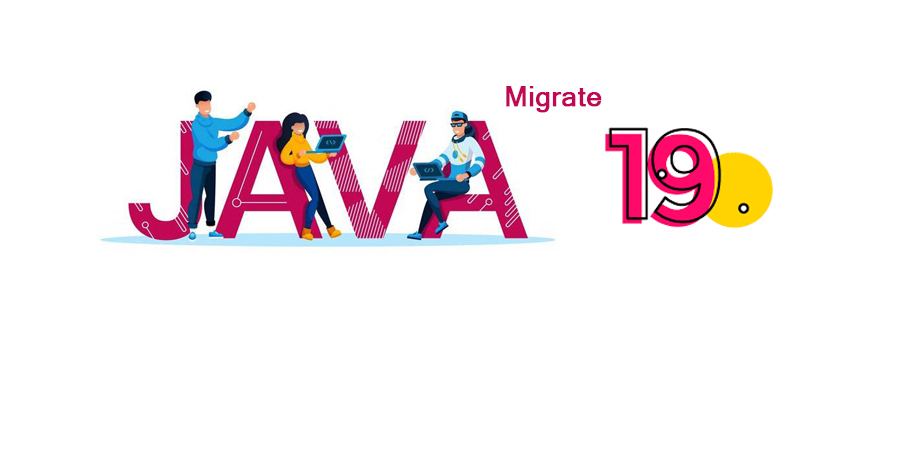The programming language Java, which is flexible and powerful, has progressed beyond its traditional uses to become a dominant force in computer-based reasoning AI and ML. Our focus here is on examining the consistent mix of Java, AI, and ML, looking at how this unique mix is molding the fate of innovation.
AI and ML are quickly developing fields, and Java is a flexible programming language generally utilized for creating AI applications. Here, the Java development company will examine the most popular Java libraries and frameworks for AI and ML. Whether you’re a fledgling or an accomplished engineer, understanding these instruments can improve your capacity to construct wise frameworks.
Master Frameworks
Apache Jena
- Depiction: Apache Jena is an open-source Java structure for building semantic web and connected information applications from RDF information.
- Usage: It gives a Programming interface to extricate information from and keep in touch with RDF diagrams.
PowerLoom Information Portrayal and Thinking Framework
- Portrayal: PowerLoom is a stage for making clever, information-based applications.
- Usage: It offers a Java Programming interface with nitty-gritty documentation.
D3web
- Depiction: d3web is an open-source thinking motor for creating, testing, and applying critical thinking information.
- Usage: It incorporates different calculations for tackling issues.
Eye
- Portrayal: The eye is an open-source thinking motor for performing semi-in-reverse thinking.
Tweety
- Tweety is an assortment of Java systems for consistent parts of AI and information portrayal.
OptaPlanner
- Portrayal: OptaPlanner is a Java-based limitation solver.
- Use Cases: It can deal with vehicle directing, representative rostering, upkeep planning, and school timetabling.
Timefold
- Portrayal: Timefold is an open-source solver AI for Java.
- Applications: It enhances vehicle directing, shift planning, field administration steering, and other NP-difficult issues.
Brain Organizations
Neuroph
- Portrayal: Neuroph is a lightweight Java system for brain network creation.
- Features: It accompanies an open-source Java library and a GUI manager for rapidly fabricating Java brain network parts.
Deeplearning4j
- Portrayal: Deeplearning4j is a profound learning library for the JVM.
- API: It gives a Programming interface to brain network creation.
Regular Language Handling (NLP)
Apache OpenNLP
- Portrayal: Apache OpenNLP is an open-source NLP Java library.
- Use Cases: It upholds Named Element Acknowledgment, Sentence Identification, POS labeling, and Tokenization.
Stanford CoreNLP
- Depiction: Stanford CoreNLP is a well-known Java NLP system.
- Functionality: It offers different devices for performing NLP assignments.
Artificial Intelligence
RapidMiner
- Depiction: RapidMiner is an information science stage with AI calculations open through GUI and Java Programming interface.
- Community: It has a functioning local area with instructional exercises and broad documentation.
Weka
- Depiction: Weka gives an assortment of AI calculations for information mining errands.
- Use Cases: It covers information bunching, affiliation rules mining, and representation.
Recollect that every library or structure has its novel elements and use cases. Contingent upon your task necessities, pick the one that best lines up with your objectives.
Java Libraries for AI and ML
Java offers a rich repository of libraries that can help improve ML and AI development services. From Apache Open NLP for normal language handling to Deeplearning4j for profound learning, these libraries engage designers to execute complex calculations easily. We’ll dig into the main Java libraries and their applications in AI and ML projects.
Java’s Part in Brain Organizations and Profound Learning
Brain organizations and profound learning are at the front of artificial intelligence headways. Java’s adaptability and similarity are crucial in creating and sending brain organizations. We will examine how Java systems, for example, DL4J, empower engineers to build and model complex deep learning models.
Incorporation of Java with TensorFlow and PyTorch
TensorFlow and PyTorch, two driving structures in the ML scene, have acquired fame for their broad abilities. Java seamlessly integrates with these constructs, allowing designers to leverage the power of their pre-built models and integrate them into Java applications. We’ll examine the upsides of this mix and reasonable use cases.
AI-Driven Information Examination with Java
Java’s ability stretches out to information examination, a critical part of AI. We’ll investigate how Java works with AI-driven information examination through libraries like Apache Flash and Apache Flink. The mix of Java’s productivity and these libraries’ capacities empowers engineers to separate significant bits of knowledge from enormous datasets.
AI in Enterprise Java Applications
Incorporating AI into big business-level Java applications improves their usefulness and dynamic abilities. We’ll talk about how organizations utilize ML calculations inside Java applications to computerize processes, further develop client encounters, and settle on information-driven choices.
Certifiable Uses of Java in AI and ML
The genuine worth of AI and ML mixed with Java lies in its different applications. From proposal frameworks in online business to misrepresentation location in finance, we’ll investigate true models where Java is instrumental in carrying out keen arrangements. This segment will feature the adaptability of Java across different businesses.
Java for AI-driven Versatile Applications
Versatile applications are progressively utilizing artificial intelligence abilities for improved client encounters. Java’s versatility stretches out to portable turn of events, empowering the making of AI-driven highlights. We’ll investigate how Java works with the integration of AI and machine learning models into diverse applications, providing clients with insightful and personalized connections.
Java’s Commitment to Logical AI
Reasonable AI is acquiring significance for straightforward dynamic cycles. Java’s commitment to open-source advancement is consistent with the standards of fair AI. We’ll talk about how Java adds to making AI models that are interpretable, reasonable, and responsible.
The Future Scene: Java, AI, and ML Collaboration
As innovation progresses, the cooperative energy between Java, AI, and ML is ready to shape the future scene. We will investigate emerging patterns, such as edge modeling, unified learning, and moral AI, and how Java can play a critical role in these developments. The article will close with bits of knowledge into the advancing connection between Java and clever advancements.
Java People group Drives in artificial intelligence and ML
A group of Java people adds to the progress of effectively connecting AI and ML. We’ll showcase local area-driven drives, collaborative tasks, and open-source improvements highlighting Java’s responsibility to stay ahead of AI and ML advancements.
Conclusion
Overall, Java’s integration with ML and AI means a noteworthy development in the programming scene. Java’s flexibility, combined with its extensive biosystem and locale support, positions it as a key driver in the development of Kenny applications. The harmonious combination of Java and AI/ML is reshaping enterprises, making them poised for extraordinary advances in creative management and innovation. Designers and organizations embracing this cooperative energy are ready to lead the following flood of mechanical advancement.







